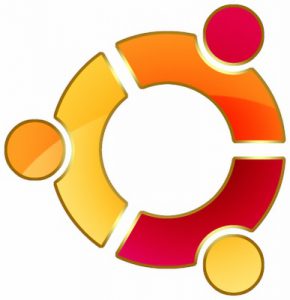
To know about Linux first we should know about GNU s a computer operating system composed entirely of free software. Its name is a recursive acronym for “GNU’s not Unix!” This name was chosen because GNU’s design is Unix-like, but differs from Unix by being free software and containing no Unix code. Plans for the GNU operating system were made in 1983 by Richard Stallman, founder of the Free Software Foundation

GNU is developed by the GNU Project, and programs released under the auspices of the project are called GNU packages or GNU programs. The system’s basic components include the GNU Compiler Collection (GCC), the GNU Binary Utilities (binutils), the bash shell, the GNU C library (glibc), and GNU Core Utilities(coreutils).

Prominent components of the GNU system include the GNU Compiler Collection (GCC), the GNU C Library (glibc), the GNU Emacs text editor, and the GNOME desktop environment.
GNU mid-level portions of the operating system were almost complete, and the upper level could be supplied by the X Window System, but the lower level (kernel, device drivers, system-level utilities and daemons) was still mostly lacking. The GNU kernel,GNU Hurd, was still in its infancy. The Hurd followed an ambitious design which proved unexpectedly difficult to implement and has only been marginally usable.
In 1991, the first version of the Linux kernel was released by Linus Torvalds. Early Linux kernel developers ported GNU code, including the GNU C Compiler, to run on Linux. Later, when the GNU developers learned of Linux, they adapted other parts of GNU to run on the Linux kernel. This work filled the remaining gaps in running a completely free operating system.
A lot of the advantages of Linux are a consequence of Linux’ origins, deeply rooted in UNIX, except for the first advantage, of course:
- Linux is free:
Linux is an open source operating system. That mean no registration fees, no costs per user, free updates, and freely available source code in case you want to change the behavior of your system.
- Most of all, Linux is free as in free speech:
The license commonly used is the GNU Public License (GPL). The license says that anybody who may want to do so, has the right to change Linux and eventually to redistribute a changed version, on the one condition that the code is still available after redistribution. In practice, you are free to grab a kernel image, for instance to add support for teletransportation machines or time travel and sell your new code, as long as your customers can still have a copy of that code.
- Linux is portable to any hardware platform:
A vendor who wants to sell a new type of computer and who doesn’t know what kind of OS his new machine will run, can take a Linux kernel and make it work on his hardware, because documentation related to this activity is freely available.
- Linux was made to keep on running:
As with UNIX, a Linux system expects to run without rebooting all the time. That is why a lot of tasks are being executed at night or scheduled automatically for other calm moments, resulting in higher availability during busier periods and a more balanced use of the hardware. This property allows for Linux to be applicable also in environments where people don’t have the time or the possibility to control their systems night and day.
- Linux is secure and versatile:
The security model used in Linux is based on the UNIX idea of security, which is known to be robust and of proven quality. But Linux is not only fit for use as a fort against enemy attacks from the Internet: it will adapt equally to other situations, utilizing the same high standards for security. Your development machine or control station will be as secure as your firewall.
- Linux is scalable:
From a Palmtop with 2 MB of memory to a petabyte storage cluster with hundreds of nodes: add or remove the appropriate packages and Linux fits all. You don’t need a supercomputer anymore, because you can use Linux to do big things using the building blocks provided with the system. If you want to do little things, such as making an operating system for an embedded processor or just recycling your old 486, Linux will do that as well.
- The Linux OS and most Linux applications have very short debug-times:
Because Linux has been developed and tested by thousands of people, both errors and people to fix them are usually found rather quickly. It sometimes happens that there are only a couple of hours between discovery and fixing of a bug.
The Linux system is based on GNU tools (Gnu’s Not UNIX), which provide a set of standard ways to handle and use the system.
All GNU tools are open source, so they can be installed on any system. Most distributions offer pre-compiled packages of most common tools, such as RPM packages on RedHat and Debian packages.
There are many distributions of Linux some of the popular distributions are






For more information go trough the following links


